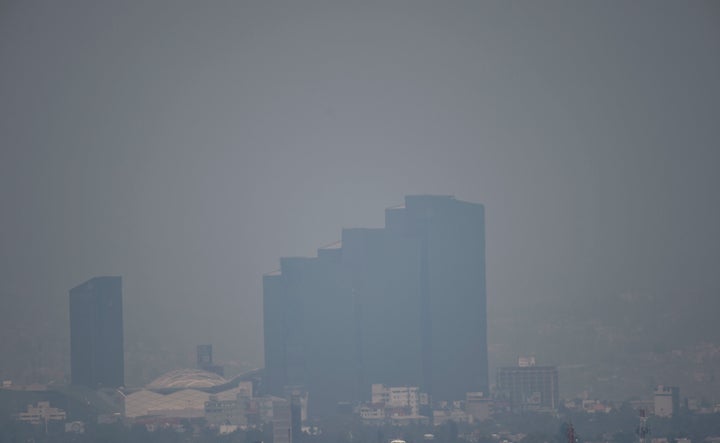The World Health Organisation reports that each year 3.7 million people die prematurely from the effects of outdoor air pollution.
80% of air pollution deaths are due to heart disease and strokes, another 20% from respiratory diseases and cancers, after exposure to fine particulate matter - the most harmful airborne pollutant.
Professor Stephen Holgate, chair of the working party that produced the Royal College of Physicians and Royal College of Paediatrics and Child Health report, says: “New findings are showing that in susceptible people, especially those living in poorer areas, air pollution can actually induce disease: especially in the case of asthma and cardiovascular disease, including heart attacks and strokes.”
We look at some of the ways your health may be affected by this global problem.

Persistent sinusitis
If you have a persistent runny nose or sinusitis that won’t go away, you may be affected by air pollution. It has been known for a long time that smoke, smog, ash and other airborne particles can aggravate and increase rates of asthma symptoms, but until now there has been little evidence that these pollutants can cause sinusitis – an inflammation in the upper respiratory tract.
A team at Johns Hopkins University recently discovered that mice exposed to polluted air exhibited more inflammatory responses in their noses and sinuses than mice breathing filtered air. Team leader Murray Ramanathan says the study “identified a lot of evidence that breathing in dirty air directly causes a breakdown in the integrity of the sinus and nasal air passages in mice”. This may have health implications for humans.
Asthma
Air pollutants such as ozone and chemicals from vehicle emissions irritate airways and trigger asthma symptoms. These could be further exacerbated by particulate matter in diesel fumes, smoke, dust and soot – they are tiny enough to enter and inflame the lungs themselves, worsening the symptoms. And even if your asthma triggers are usually house dust mite droppings, pet dander, pollen, or fungal spores, irritant air pollution can make you more sensitive to them.
Cardiovascular disease
Vehicle fumes pollute the air with nano particles. These are so ultra-fine that they bypass our natural particle filters in the upper respiratory tract, are drawn deep into the lungs, and enter the bloodstream. These nanoparticles prevent contraction and relaxation of the blood vessels, increasing the risk of blood clots and heart attack, particularly affecting people with heart failure. Professor David Newby of the British Heart Foundation says: “We have a clear link between air pollution levels and heart attacks, and we believe the particles in the air are the cause of this.”

Brain disease
There’s even growing evidence that suggests air pollution can enter our brains and may do harm. Toxic magnetite nanoparticles from polluted air have been found ‘in abundance’ in human brain tissue. However, research has a long way to go to prove conclusively that air pollution particles cause or exacerbate brain disease, and the link remains controversial.
Air pollution and children’s health
Until the age of six, children’s lungs and airways and immune system are developing and not fully functional, leaving a critical window where exposure to air pollution may do lasting damage to their respiratory health.
Young children in buggies and pushchairs, or even toddling, are particularly vulnerable to the effects of air pollution from traffic. They sit or walk lower to the ground, at the same level as vehicle exhaust pipes, breathing in ultra-fine nanoparticles that get deep into their lungs and bloodstream.
A study by the University of Surrey identified bus stops and traffic lights as the worst places for exposure to particles from vehicle emissions, and the worst time as morning school drop-off when traffic is at its heaviest and slowest-moving.
“Young children are far more susceptible to pollution than adults, due to their immature and developing systems and lower body weight. Essentially children could be at risk of breathing in some nasty and harmful chemical species, such as iron, aluminium and silica that form together the particles of various size ranges,” cautions lead study author Dr Prashant Kumar. Dr Kumar suggests using pram covers to limit exposure to pollution.